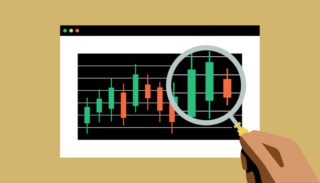Understanding Crypto Trading Technical Tools A Comprehensive Overview

Understanding Crypto Trading Technical Tools
In the fast-paced world of cryptocurrency trading, having the right tools at your disposal can make all the difference between success and failure. As traders navigate volatile markets, they rely on various technical tools to analyze trends, assess price movements, and make informed decisions. In this article, we will explore essential crypto trading technical tools and how they can enhance your trading strategy. For more information on this topic, Crypto Trading Technical Tools visit website.
1. Charting Software
Charting software is at the core of technical analysis. It allows traders to visualize price movements and trends over time. The most popular charting tools, such as TradingView, Coinigy, and CryptoCompare, offer customizable charts with various timeframes, indicators, and drawing tools. These platforms enable traders to analyze historical data and identify potential entry and exit points.
2. Technical Indicators
Technical indicators are mathematical calculations based on price and volume data. They help traders to identify trends, momentum, volatility, and market strength. Some of the most commonly used indicators in crypto trading include:

- Moving Averages (MA): Moving averages smooth out price data to identify trends over a specific time frame. Traders commonly use the Simple Moving Average (SMA) and the Exponential Moving Average (EMA).
- Relative Strength Index (RSI): The RSI measures the speed and change of price movements and is used to identify overbought or oversold conditions in a market.
- MACD (Moving Average Convergence Divergence): This indicator shows the relationship between two moving averages of a security’s price and helps traders identify potential buy and sell signals.
- Bollinger Bands: Bollinger Bands consist of a middle band (SMA) and two outer bands that represent volatility. The bands expand and contract based on market volatility.
3. Trading Bots
Automated trading bots have gained popularity in the crypto market for their ability to execute trades on behalf of traders based on predefined criteria. These bots can analyze multiple markets simultaneously, backtest strategies, and execute trades with speed and precision. Popular trading bots include 3Commas, Cryptohopper, and HaasOnline. While trading bots can enhance efficiency, it’s crucial for traders to monitor their performance and adjust parameters as needed.
4. Risk Management Tools
Effective risk management is essential for long-term success in trading. Several tools can assist traders in managing their risk exposure:
- Stop-Loss Orders: A stop-loss order automatically sells an asset when its price reaches a specified level, helping to minimize potential losses.
- Take-Profit Orders: Similarly, take-profit orders allow traders to set a target price at which an asset will be sold, securing profits when that price is reached.
- Position Sizing Calculators: These calculators help traders determine the appropriate size of a trade based on their risk tolerance and account balance.
5. News Aggregators and Sentiment Analysis Tools
The crypto market is significantly influenced by news and events. Traders can utilize news aggregators like CryptoPanic and CoinDesk to stay updated with the latest developments. Moreover, sentiment analysis tools, such as TheTIE and Santiment, analyze social media and news sentiment to predict market movements. By incorporating news and sentiment analysis into their trading strategy, traders can make more informed decisions.

6. Portfolio Management Tools
As traders diversify their investments across various cryptocurrencies, portfolio management tools become essential. These tools help traders track their assets, calculate profits and losses, and analyze overall performance. Platforms like Blockfolio and Delta provide comprehensive features for managing crypto portfolios effectively.
7. Backtesting Software
Backtesting refers to the process of testing a trading strategy using historical data. This practice allows traders to evaluate the effectiveness of their strategies before applying them in live markets. Tools like TradingView and NinjaTrader offer backtesting capabilities, enabling traders to refine their strategies, manage risk, and increase their chances of success.
8. Community and Educational Resources
Lastly, being part of a trading community can provide invaluable insights and support. Online forums, Discord groups, and social media channels dedicated to crypto trading can enhance a trader’s knowledge and help them stay updated with market trends. Additionally, educational platforms offering courses on technical analysis, trading psychology, and risk management can empower traders to make better decisions.
Conclusion
In conclusion, utilizing the right crypto trading technical tools is crucial for navigating the complexities of the cryptocurrency market. From charting software and technical indicators to risk management tools and community resources, each tool plays a vital role in developing effective trading strategies. By embracing these tools and continuously educating themselves, traders can improve their chances of success in the ever-evolving world of cryptocurrency trading.